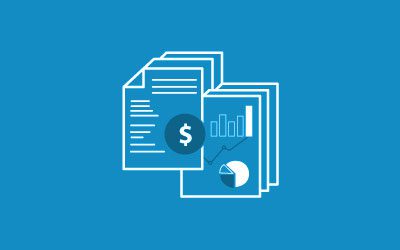There’s a question you frequently (and unfortunately) hear from managers when they are presented with financial reports: “Thanks. Now, what do these really mean?” An income statement and a balance sheet will reveal some basic facts about a company’s financial condition, but their ability to communicate meaningful information is usually quite limited. For example, imagine that the income statement shows earnings equal to 5% of revenue. Is that good or bad? How does that compare to the business plan? That is a matter for a separate analysis. Now, however, advances in financial reporting from Acumatica provide a much-needed new level of context and detail.
What is Financial Reporting All About?
All accounting packages create financial reports. They contain standard modules like General Ledger, Accounts Payable and Accounts Receivable. From these functions, the package is able to generate all the major reports: income statement, balance sheet, statement of cash flows, accounts receivable aging and so forth.
What is the purpose of these reports? They’re needed for tax reporting, at a minimum. They offer managers and shareholders a picture of the company’s financial condition, e.g. is it profitable or in a loss situation? Are expenses higher in the current period compared to earlier periods, and so forth. These are essential facts, but they don’t usually tell the whole story.
What’s Missing in Conventional Financial Reports
Financial reporting should go further than just stating the financial state of a business. Financial reports are about more than just managing money. They should be about managing the business. To be of true help to managers, reports should reflect how the business is performing in a variety of contexts. How is it doing compared to the annual plan? Do the reports reflect the unique structure of the organization and the nature of your markets?
A Better Kind of Financial Reporting
A new kind of financial reporting, available from Acumatica, gives you the ability to create a number of special reports that align with the specifics of your operations and resulting financial transactions. To achieve this outcome, Acumatica can potentially integrate features for cash and currency management, tax management, deferred revenue accounting, fixed assets, payroll and more. Deployed as an integrated suite, Acumatica allows events and transactions to be entered once, but then processed through a single, shared database infrastructure. Financial reporting flows from there, with a sophisticated complete drill-down capability and audit trail.
Using financial management reporting to support business management decision-making requires taking a close look at data sub-sets. As a result, financial reporting software needs to create multiple versions of any standard report, e.g. a departmental P&L or product- or customer-specific income statements and so forth. You will also need analytical capabilities, the capacity to build additional views of the data. These views should be available in reports, on-screen, Excel downloads and so forth.
Acumatica delivers these capabilities. It enables flexible reporting that gives you the ability to act as financial planner. You get the ability to see cause-and-effect, sorting out significant trends and effects. You can project possible results of strategic and tactical changes. Acumatica provides you with powerful and flexible financial reporting tools that transforms your day-to-day financial tracking software into a resource for business value.
Acumatica is one our specialties. We’ve worked with many clients on specialized Acumatica financial reporting projects. If you are interested in learning how Acumatica can help your business with better financial reporting, let’s talk.
Additional Acumatica Resources
Manufacturing Challenges—How Acumatica Can Help


